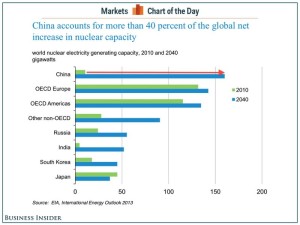In case you missed Fission’s latest press release we hit mineralization on another five holes at R390E zone. The zone has now doubled in strike length since the winter program.
Analysts have been using R390E as the benchmark for the other zones so it’s great to see it expanding so fast. With off-scale results at all four zones, what happens with R390E shows, in my opinion, the potential for the discovery as a whole. When you consider that all four zones remain open in almost every direction, I think you’ll agree that PLS keeps getting more and more exciting.
As far as the latest results go, the holes to note in particular are PLS13-086 and PLS13-083. Hole 086 is 10m north of PLS13-061 on line 360E and based on scintillometer readings it appears to be more robust which is increases the potential strength of the zone. Hole 083 is a 15m step out to the west of hole PLS13-075. You may recall that 075 reported http://www.fissionuranium.com/news/step-out-hits-21-65m-total-off-scale-radioactivity-within-70m-of-mineralization-at-r390e-zon/ 61.5m total composite mineralization in several intervals over a width of 105.5m (53.0m to 158.5m). Hole 083 may in fact have even better results than reported so far due to the fact that there was excessive core loss in one of the high probe count intervals which prevented an accurate scintillometer reading. We’ll provide an update on this hole as soon as we can.
Here are the drilling highlights:
- PLS13-086 (line 350E) intersected 47m of mineralization (75.0m – 122.0m), including:
- 5.27m total composite off-scale (>9999 cps), including:
- 3.0m of continuous off-scale (>9999 cps) (101.0m – 104.0m)
- PLS13-083 (line 315E) intersected 61.5m total composite of variably radioactive mineralization over a 105.5m wide interval (53.0m – 158.5m)
- PLS13-078 (line 435E) intersected 42.0m total composite of variably radioactive mineralization over a 60.5m wide interval (75.0m to 135.5m)
- Upper Zone: 31.5m mineralization (85.0m – 166.5m), including:
- 1.25m total composite off-scale (97.0m – 98.0m)
- Lower Zone: 10.0m mineralization (125.5m – 135.5m)
- PLS13-085 (line 330E) intersected 36.0m total composite of variably radioactive mineralization in several intervals over a 55.5m wide interval (58.5m – 114.0m), including:
- 22.5m of variably radioactive mineralization (82.0m – 104.5m), including:
- 2.16m total composite off-scale radioactivity (85.5m to 87.81m)
- PLS13-081 (line 405E) intersected 25.5m of variably radioactive mineralization (105.0m – 130.5m)
Dev Randhawa, CEO of Fission Uranium








